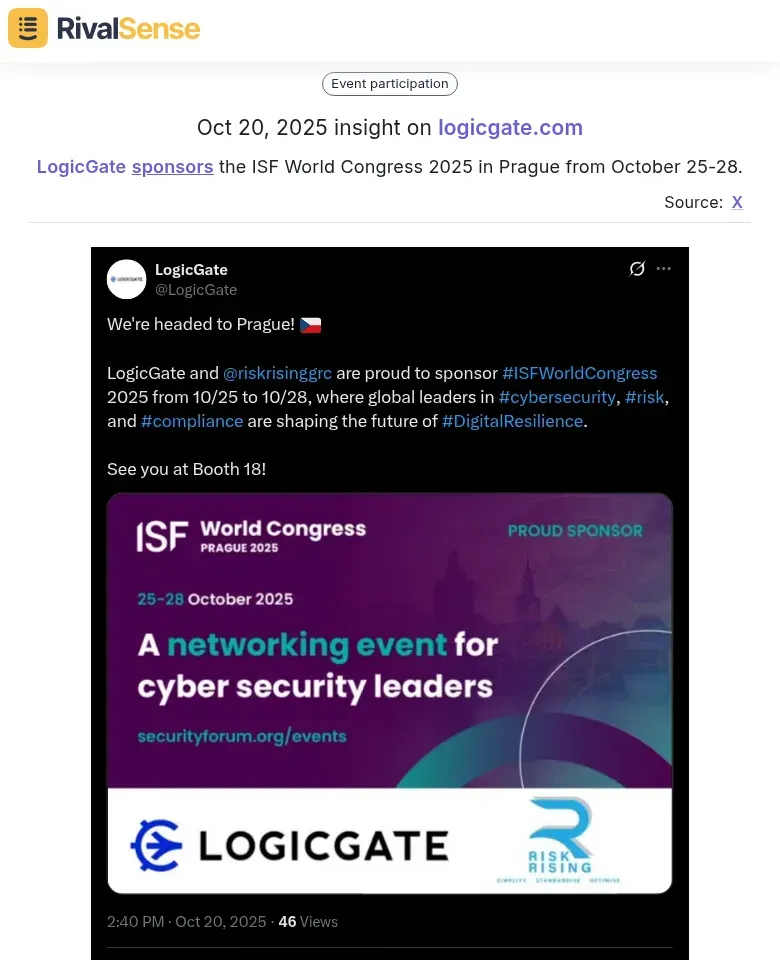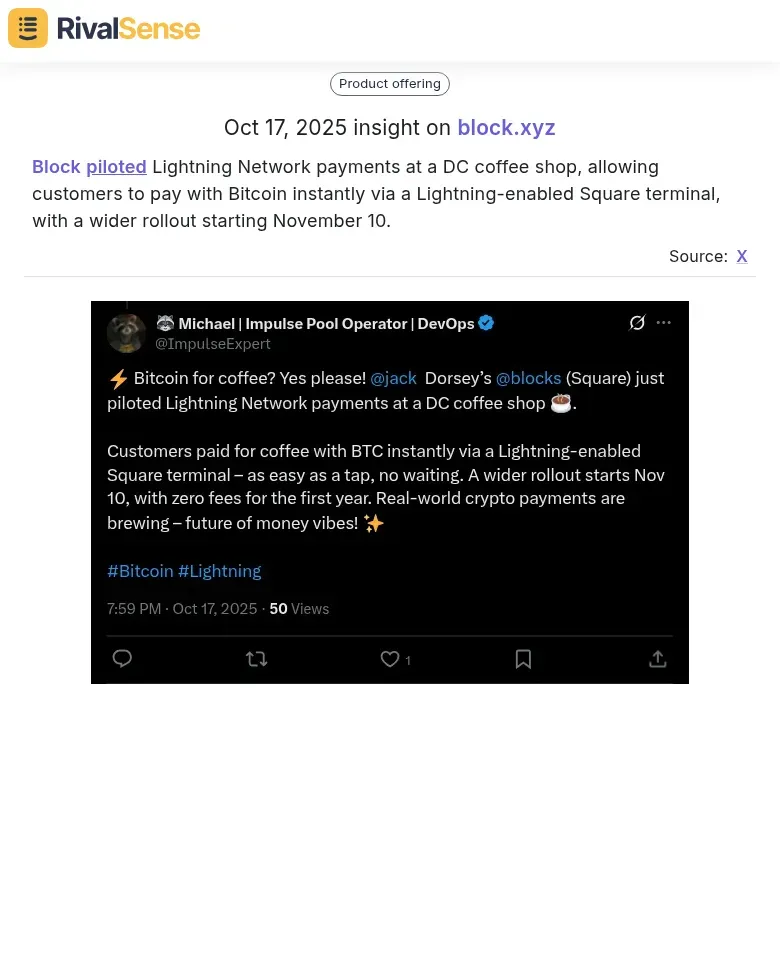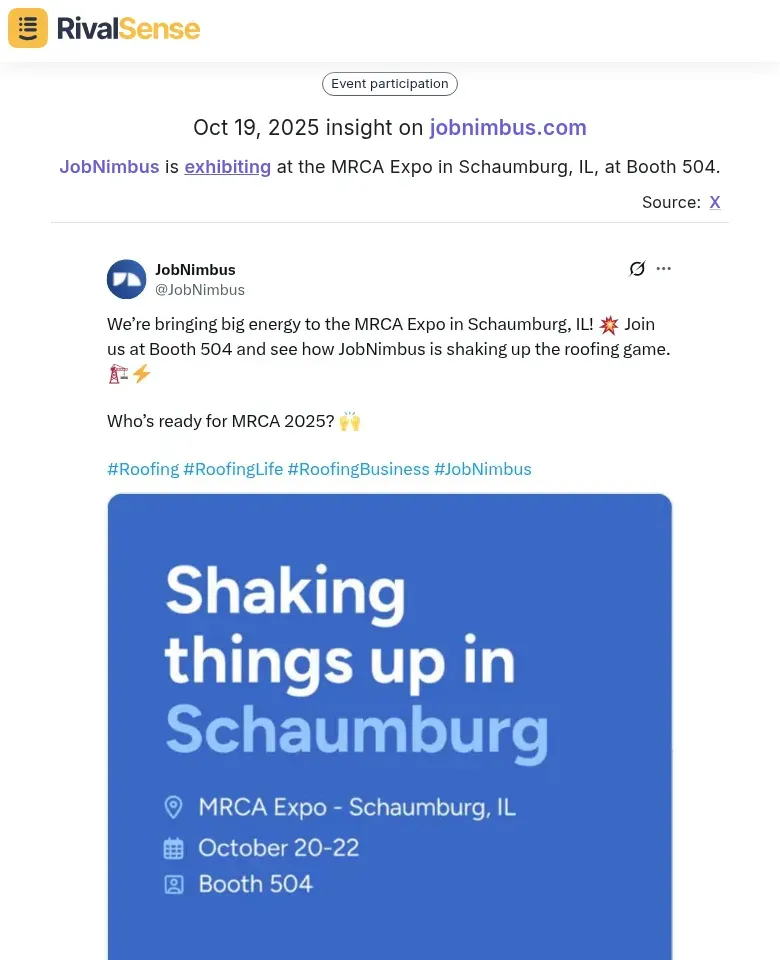Advanced Twitter Tactics for Tracking Competitor Activity
Twitter offers unparalleled real-time competitive intelligence that traditional tools miss. While most businesses track competitors' websites and press releases, Twitter reveals their immediate priorities, customer pain points, and emerging strategies through unfiltered conversations. The platform's immediacy lets you see competitors reacting to market shifts, launching products, or addressing customer complaints in real-time—insights that often precede formal announcements by weeks.
Start by identifying key competitor accounts: follow their official handles, executives, product teams, and customer support. Don't overlook industry influencers who often share early signals about market trends. Create Twitter Lists to organize these accounts systematically—one for direct competitors, another for industry thought leaders.
For systematic tracking: enable notifications for critical accounts, use Twitter's advanced search with competitor-specific keywords, and monitor hashtags they frequently use. Set up daily check-ins to review competitor activity and weekly analysis sessions to identify patterns. Practical tip: Track not just what competitors post, but how their audience engages—reply sentiment and question patterns reveal unmet needs you can address.
Monitoring Competitor Event Participation and Sponsorships
Event sponsorships reveal competitor priorities—track which conferences they sponsor to gauge market focus and expansion strategies. By keeping an eye on their event activities, you can anticipate their strategic moves and align your own marketing efforts accordingly. For example, RivalSense recently identified that LogicGate is sponsoring the ISF World Congress 2025 in Prague from October 25-28.  Insights into event sponsorships are valuable because they highlight where competitors are investing resources and targeting new markets, helping you refine your own event strategy and competitive positioning.
Insights into event sponsorships are valuable because they highlight where competitors are investing resources and targeting new markets, helping you refine your own event strategy and competitive positioning.
Monitor booth locations and exhibition details: prime spots often indicate higher investment and competitive positioning. Use event timelines strategically—major announcements typically align with industry events. 🎯 Create a checklist:
- Identify key industry events
- Track competitor sponsorship patterns
- Analyze booth positioning
- Set calendar alerts for event dates
Practical tip: Use tools like RivalSense to automate tracking and receive alerts when competitors register for events. This proactive approach helps anticipate product launches and strategic moves, giving you a competitive edge.
Tracking Product Launches and Technology Pilots
Tracking product launches and technology pilots on Twitter provides invaluable competitive intelligence. These early signals can give you a head start in responding to new market offerings and identifying gaps in your own product lineup. For instance, RivalSense tracked that Block piloted Lightning Network payments at a DC coffee shop, allowing customers to pay with Bitcoin instantly via a Lightning-enabled Square terminal, with a wider rollout starting November 10.  Monitoring product pilots is crucial for business strategy as it reveals innovation priorities and potential market expansions before full-scale launches, enabling you to prepare counter-strategies or explore similar opportunities.
Monitoring product pilots is crucial for business strategy as it reveals innovation priorities and potential market expansions before full-scale launches, enabling you to prepare counter-strategies or explore similar opportunities.
Start by identifying pilot programs and beta tests—follow competitor engineering teams, product managers, and official accounts. Look for hashtags like #beta, #pilot, or #earlyaccess, and monitor mentions of "limited release" or "testing phase" to understand innovation priorities.
Monitor rollout schedules and geographic expansion by tracking location-specific tweets and announcements. Use advanced search operators like "near:" or "place:" to see where new features are being tested. Create a timeline of releases to predict future expansions.
Analyze customer feedback during introductions by scanning replies, retweets, and sentiment in comments. Tools like Twitter's advanced search can filter by positive/negative keywords. Track engagement metrics (likes, shares) to gauge initial reception.
📋 Practical steps:
- Set up Twitter Lists for competitor teams
- Use social listening tools for alerts
- Regularly review tweet archives
This approach reveals strategic shifts before full-scale launches, giving you a competitive edge.
Analyzing Competitor Messaging and Content Strategy
Twitter offers a goldmine for decoding competitor messaging and content strategy. By dissecting their communication patterns, you can uncover their core narratives and identify areas where your brand can differentiate. Start by analyzing their pinned tweets, thread patterns, and recurring hashtags to understand their core value propositions and marketing narratives. Track how they position solutions to customer pain points—this reveals their strategic focus areas.
Use engagement metrics as your effectiveness barometer. Monitor likes, retweets, and replies to identify which content resonates most. High-engagement posts often indicate successful campaigns or topics that strike a chord with your shared audience.
📊 Practical steps:
- Create a spreadsheet tracking competitor tweet themes, engagement rates, and posting frequency
- Note content gaps where competitors aren't addressing key customer concerns
- Identify opportunities by spotting underserved topics or formats (like video vs. text)
- Monitor response patterns to customer inquiries for service positioning insights
Look for patterns in content cadence—do they launch campaigns on specific days? Are there seasonal themes you can anticipate? This analysis helps you differentiate by filling content voids and timing your messaging to counter or complement their strategy.
Leveraging Twitter Data for Strategic Decision-Making
Twitter data offers real-time competitive intelligence that can transform your strategic decision-making. Integrating these insights into your business planning can help you stay ahead of market shifts and capitalize on competitor weaknesses. For example, RivalSense reported that JobNimbus is exhibiting at the MRCA Expo in Schaumburg, IL, at Booth 504.  Tracking event exhibitions like this is valuable for strategic decision-making as it indicates market presence and competitive positioning, helping you plan your own event strategies or identify partnership opportunities.
Tracking event exhibitions like this is valuable for strategic decision-making as it indicates market presence and competitive positioning, helping you plan your own event strategies or identify partnership opportunities.
Integrate Twitter insights into your competitive analysis framework by monitoring competitor announcements, customer feedback, and engagement patterns. Track when competitors launch features, respond to criticism, or pivot messaging—these signals reveal strategic priorities and potential vulnerabilities.
Use this intelligence to inform your product roadmap and timing decisions. If a competitor announces a major feature, analyze market reaction before committing resources. Positive reception may signal an opportunity to differentiate; negative feedback could indicate a gap you can exploit. Time your launches strategically—consider pre-empting competitor announcements or capitalizing on their missteps.
Develop counter-strategies by identifying competitor weaknesses through Twitter patterns. Look for recurring customer complaints, slow response times, or inconsistent messaging. ✅ Create a checklist:
- Monitor key competitor accounts daily
- Track hashtag performance
- Analyze sentiment trends
- Document engagement metrics
Practical tip: Set up Twitter Lists for organized competitor monitoring and use social listening tools to automate data collection. Focus on actionable insights—when you spot a competitor struggling with customer support, strengthen your own service positioning; when they receive praise for specific features, assess if you need to match or surpass their offering.
Putting It All Together: Automate Your Competitive Intelligence
Manually tracking competitors on Twitter can be time-consuming, but tools like RivalSense streamline the process by automatically monitoring product launches, event participations, pricing updates, and more across various sources. With weekly email reports, you can stay informed without constant manual checks. To gain these actionable insights and enhance your competitive strategy, try RivalSense for free at https://rivalsense.co/ and get your first competitor report today!
📚 Read more
👉 Predictive Analytics for Key Account Success in Transportation
👉 Avoid These 4 Pricing Mistakes When Tracking Competitor Insights
👉 How SentinelOne's Acquisition of Observo AI Enhances Competitor Analysis Strategies
👉 Competitive Positioning: The Strategic Advantage That Drives Business Growth
👉 Competitor Promotional Offers Tracking Framework for Influencer Platforms
